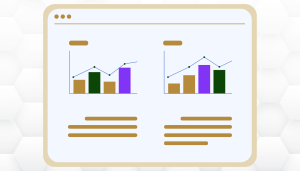
Share
By Alex Cramer
Decades ago, when we listened to music on iPods (RIP to a real one) and ordered takeout over the phone, we used social media to tell people who our favorite band was or to share our thoughts on breakfast burritos.
But time went by and social networks evolved into places where we rallied for political causes, raised money for charity and went viral for ridiculous trends and stunts (deny it all you want, but we all remember what happened when you tried the milk chug challenge).
In 2022, social media has taken its next evolutionary step forward and it now exists so that your brand can create an e-commerce empire that spans the globe and connects your product with customers that were once completely out of your reach.
Do you think I’m exaggerating?
A study by Accenture reveals that the global social commerce market will reach $1.2 trillion by 2025, with two-thirds of that spending being done by Millennials and Gen-Z.
If that sounds optimistic, know that last year, in China alone, consumers made over $400 billion in purchases through social networks.
So what are the benefits of social commerce to your brand and how can affiliate marketing help you take advantage of them?
Leverage Influencer Affiliates
The amount of time we waste skipping over, scrolling past or opting out of ads for products and brands that we have absolutely no interest in is one of the worst parts of modern social networks.
And that’s exactly why influencer affiliates should be an essential part of your social commerce strategy. Unlike paid ads, consumers choose to follow influencers because they like their music, their style and their opinions on what to buy, and social commerce adds even more power to this relationship.
If your brand is in a fashion vertical, not only can your influencer affiliate model your clothes, but your buyer can make a purchase directly from their Instagram or Facebook account instead of being forced to navigate to another website.
Shorten the Funnel
The easier it is for your customer to go from “I want that” to “I bought that”, the more likely it is that you’re going to make a sale. A key advantage of social commerce is that it can collapse the sales funnel and make the process between discovering a product and making a purchase much shorter.
Previously, if you discovered a product on social media that you were interested in, you would have to travel to the brand page, locate the item, enter your credit card and shipping info and make the purchase.
However, with social commerce, your customer never has to leave the site where they discovered your product, which means that it can take as few as 2 or 3 clicks for them to complete a purchase. They can then post about their purchase directly onto their own feed, making them not just a customer but also a brand ambassador.
Don’t Chase Your Customers, Let Them Find You
Another key advantage is that you’re meeting your buyer where they already are. A study by Accenture reveals that globally, approximately 3.5 billion people use social media and they spend, on average, two hours a day browsing social media networks.
Wirecutter is one of the top review affiliates on the internet and they receive a few hundred thousand unique visitors in a month. Instagram on the other hand has almost one billion unique visitors in a month. So it’s not hard to see the immense value that could be unlocked if you could leverage that audience not just for marketing but for direct sales.
Get on the Train
From live-stream shopping to payment processing, every major social network is rapidly building out its e-commerce infrastructure, to create a seamless and convenient experience for its users.
Social commerce is powerful because it aligns your brand with your consumers existing habits and provides the social proof and validation that is such an important part of the purchase journey.
That means in 2022, the question isn’t if your brand will do social commerce, but rather how quickly can you catch up to your competitors who already are.





